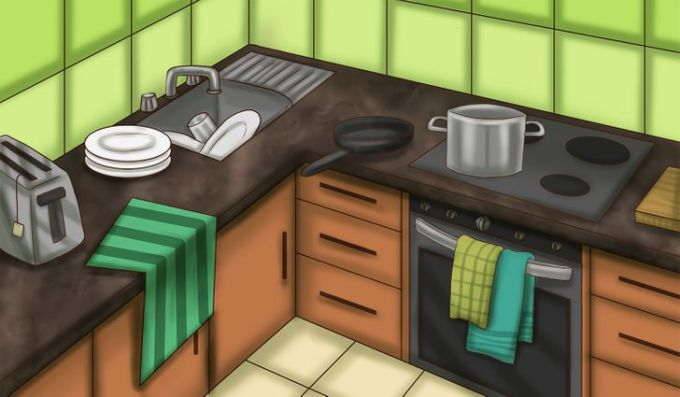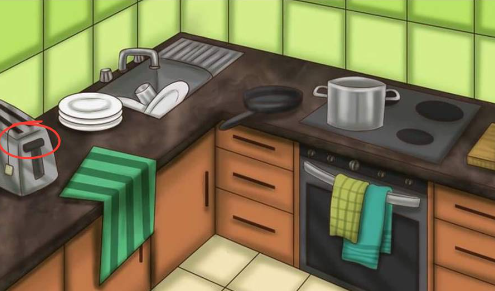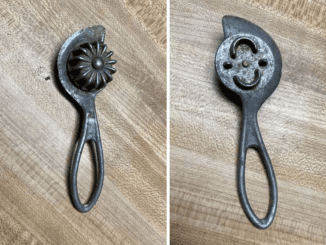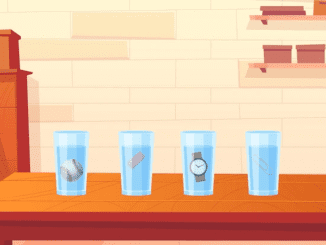When it comes to visual puzzles, nothing beats the thrill of uncovering something that’s hiding in plain sight. Today’s challenge takes us to a seemingly ordinary kitchen—but there’s a catch. Somewhere in this image, something is out of place. Can you find the mistake?
This puzzle isn’t just a fun brain teaser; it’s a fantastic way to sharpen your observation skills and test your attention to detail. So, grab your detective hat and let’s dive in!

Challenge Yourself: What Doesn’t Belong?
At first glance, this kitchen looks just like any other. You’ll notice common items like a sink, a toaster, some dish towels, and pots on the stovetop. But hidden among these everyday objects is a subtle mistake—a detail that just doesn’t fit.
Take a moment to examine the image. Look closely at each element. Found it yet? If not, don’t worry! We’ll walk you through how to solve this clever puzzle step by step.
Common Mistakes When Solving Visual Puzzles
If you didn’t spot the mistake right away, you’re in good company. Many people struggle with puzzles like these because our brains tend to make assumptions based on familiar environments. Here are a few reasons why this might happen:
1. Overlooking Familiar Objects
When you look at a kitchen, your brain fills in the gaps based on what it expects to see. Plates, utensils, and appliances seem perfectly normal, so you don’t scrutinize them too closely.
2. Focusing on Irrelevant Details
Sometimes, people get distracted by the wrong areas—like the tiles on the wall or the pattern on the dish towels—while the real clue hides in plain sight.
3. Missing the Out-of-Context Element
The key to solving this puzzle lies in spotting something that doesn’t belong in the kitchen setting. Since everything else fits, the odd item blends in more easily than you’d think.
Now that you know what might trip you up, let’s break down the solution.
Step-by-Step Solution: Finding the Mistake
To solve this puzzle, it helps to analyze the kitchen scene piece by piece. Here’s how:
1. Inspect the Sink and Countertop
The sink area appears perfectly normal. Plates are stacked, utensils are organized, and towels are neatly folded. Nothing seems unusual here.
2. Check the Stovetop and Pots
The stovetop has a frying pan and a pot—both logical items for a kitchen. Still nothing out of the ordinary.
3. Examine the Toaster
Now, shift your focus to the toaster on the countertop. Look closely. Instead of bread or bagels, there’s something unexpected inside: a tea bag.
The Answer: A Tea Bag in the Toaster
That’s right—the mistake is a tea bag sitting inside the toaster! While we often associate toasters with bread, bagels, or waffles, a tea bag is definitely out of place. This small but peculiar detail is what makes the puzzle so intriguing.

Why Was This Mistake Hard to Spot?
This riddle is tricky because it plays on our assumptions and the way our brains process familiar scenes. Here’s why the tea bag in the toaster might have slipped past you:
1. It Blends Into the Scene
The tea bag is small and doesn’t draw much attention at first glance. It’s easy to miss if you’re focused on larger items.
2. Our Brains Skip Over Expected Details
We’re so used to seeing certain objects in kitchens that we rarely question them. The toaster itself seems logical—so why would we check inside it?
3. The Kitchen Noise
With so many objects in the image, your attention might scatter. You’re trying to process multiple details at once, making it harder to zero in on the odd one out.
Tips to Improve Your Observation Skills
If this puzzle gave you trouble, don’t worry. Spotting subtle mistakes takes practice. Here are a few tips to help you sharpen your skills for next time:
1. Slow Down and Scan Methodically
Instead of jumping around the image, examine each section carefully. Breaking it into smaller parts makes it easier to catch unusual details.
2. Question Every Object
Ask yourself: Does this item belong in this setting? If something feels out of context, take a closer look.
3. Practice with Similar Puzzles
The more visual challenges you tackle, the better you’ll get at spotting oddities. Puzzles like these train your brain to notice even the smallest inconsistencies.
Why These Puzzles Are More Than Just Fun
Visual puzzles like this one do more than entertain—they offer valuable mental exercise. They enhance your focus, boost your attention to detail, and encourage critical thinking. Plus, they’re a great way to unwind while keeping your brain sharp.
What Did You Spot First?
Did you notice the tea bag in the toaster right away, or did it take a while? Maybe you were drawn to another part of the image that seemed suspicious. Whatever your experience, share it in the comments! It’s always fun to see how others approach puzzles like this.
And if you enjoyed this challenge, why not share it with your friends? See if they can solve it faster than you did!
Conclusion: Sharpen Your Observation Skills with Every Puzzle
This kitchen puzzle is a great reminder that the smallest details often hold the biggest surprises. Whether it’s spotting a tea bag in a toaster or solving more complex riddles, challenges like these keep your mind engaged and your observation skills sharp.
So, the next time you come across a puzzle, take your time, look closely, and enjoy the thrill of uncovering the hidden twist. After all, the joy of solving is as satisfying as the puzzle itself. Keep challenging yourself, stay curious, and most importantly—have fun!


